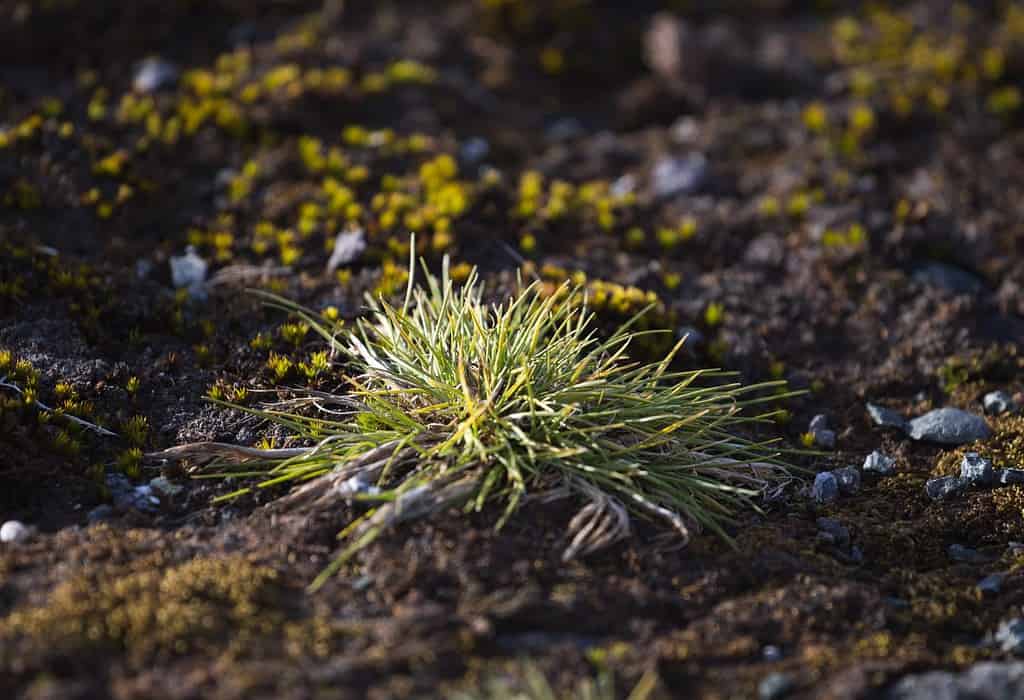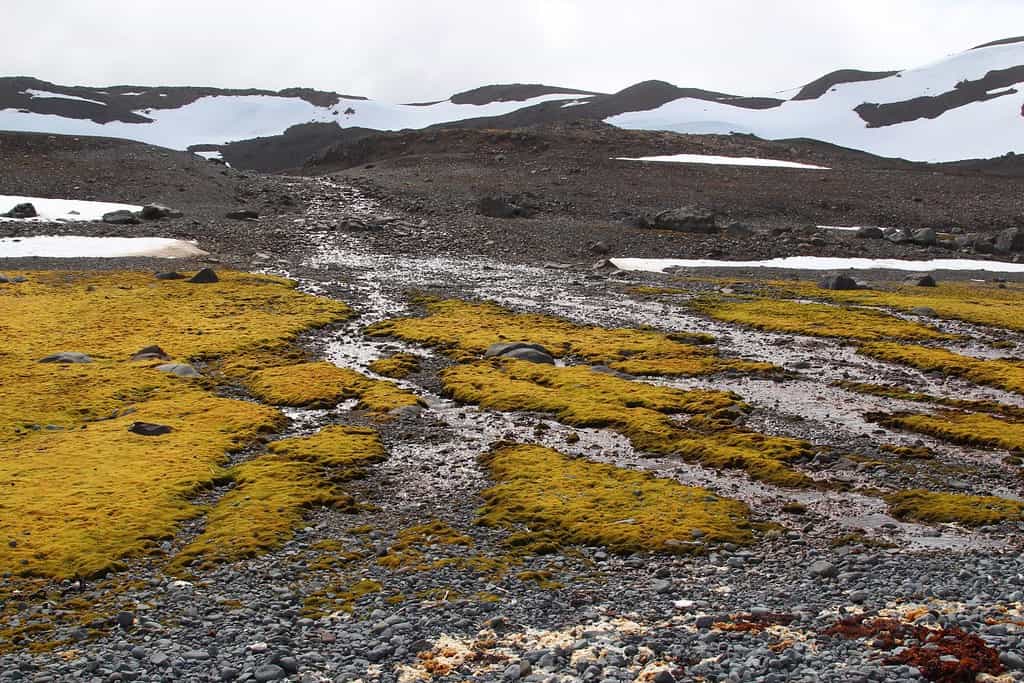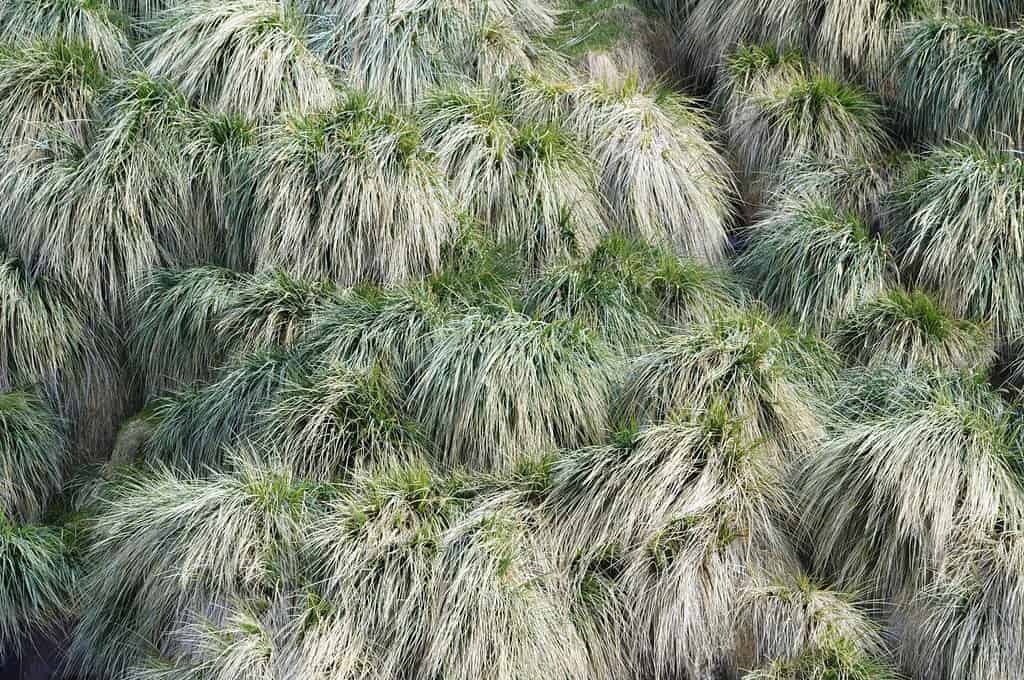Antarctica is inhospitable and freezing cold, and the presence of ice on most of the continent leaves less than 1 percent of the continent open to plant growth. However, this is changing, and flowers are blooming at unprecedented rates in some parts of the continent. Are flowers blooming in Antarctica a good or bad thing?
Why Are More Flowers Blooming in Antarctica?
Warmer temperatures driven by climate change are causing flowers to bloom in Antarctica. According to scientists, these flowering plants have grown more in the last 10 years than they usually grow in 50. Climate change is affecting the western side of Antarctica the most which is where the flora in question exists.
What Flowers Are Blooming in Antarctica?

Antarctic hair grass is one of two flowering plants in Antarctica.
©ViktoriaIvanets/Shutterstock.com
Antarctic hair grass (Deschampsia antarctica) and Antarctic pearlwort (Colobanthus quitensis) are blooming like they never have before. They exist on the Antarctic Peninsula, some continental coastal areas, in the South Shetland Islands, and the South Orkney Islands. In these habitats, these two plants are the only flowering plants on the continent as the harsh conditions elsewhere do not allow anything more to grow.
New colonies of Antarctic hair grass have sprouted at a rate 25 times greater than they have historically. Antarctic pearlwort is spreading 10 times faster than it has in the past. This shows that their habitat has changed drastically and now supports more plants than ever. On the Antarctic Peninsula, the average temperature has increased by about 37 degrees Fahrenheit which has dramatically changed the growing environment in the area
Is It Good or Bad that Flowers Are Blooming in Antarctica?

More flowering plants may inhibit the growth of mosses which will affect the ecosystem.
©semper-scifi/Shutterstock.com
It is bad that flowers are blooming at extraordinary rates in Antarctica. That’s because it shows that global warming is affecting even the most remote areas on the planet.
The rapid growth of Antarctic hair grass and Antarctic pearlwort closer to the main continent may inhibit the growth of mosses, fungi, liverworts, and lichens. This may irreversibly affect the fragile ecosystems and soils where these things grow.
What Other Plants Grow in Antarctica?

Tussock grass is spreading dramatically in Antarctica.
©GTW/Shutterstock.com
There are over 300 species of lichens, 100 moss species, 25 kinds of liverworts, and more than 20 types of fungi growing on the continent. A few species are especially long-lived, with some lichens surviving up to 600 years.
Unlike the flowering plants on the islands, some of these species exist in places like rock crevices in some of the most extreme locations on the main continent. As glaciers retreat and leave more exposed rock, some species of lichen are spreading.
Mosses in continental Antarctica are measurably affected by climate change. Silvery thread moss (Bryum argenteum), marsh bryum (Bryum pseudotriquetrum), and fire moss (Ceratodon purpureus) are spreading.
However, in East Antarctica, drier conditions are stressing moss colonies and reducing their ability to photosynthesize. This is causing them to change color and may be irreversible if something doesn’t change soon.
Tussock grass (Paradiochloa flabellata) also grows in Antarctica. It grows in patches up to 6 feet tall and it too is spreading dramatically amid a changing climate.
Some of the other fringe islands, most notably South Georgia, experience a relatively warmer climate. On this island, in particular, more than twelve flowering plants exist. However, this island is unique though its flora is also experiencing unprecedented changes driven by climate change.
What Keeps Plants From Growing in Antarctica?
Freezing temperatures, whipping winds, and a high amount of solar radiation inhibit plant growth in Antarctica. Light inconsistencies also affect the ability of plants to flourish. During the peak of winter, 24-hour darkness takes hold while the height of summer sees 24 hours of daylight.
Water in liquid form that’s usable by plants is also scarce on the continent. An exception is the northernmost islands and the Antarctic Peninsula which is why more plants exist in these spots. As for the rest of the continent, it’s bone dry as any available water is locked away in ice and snow.
Thank you for reading! Have some feedback for us? Contact the AZ Animals editorial team.








